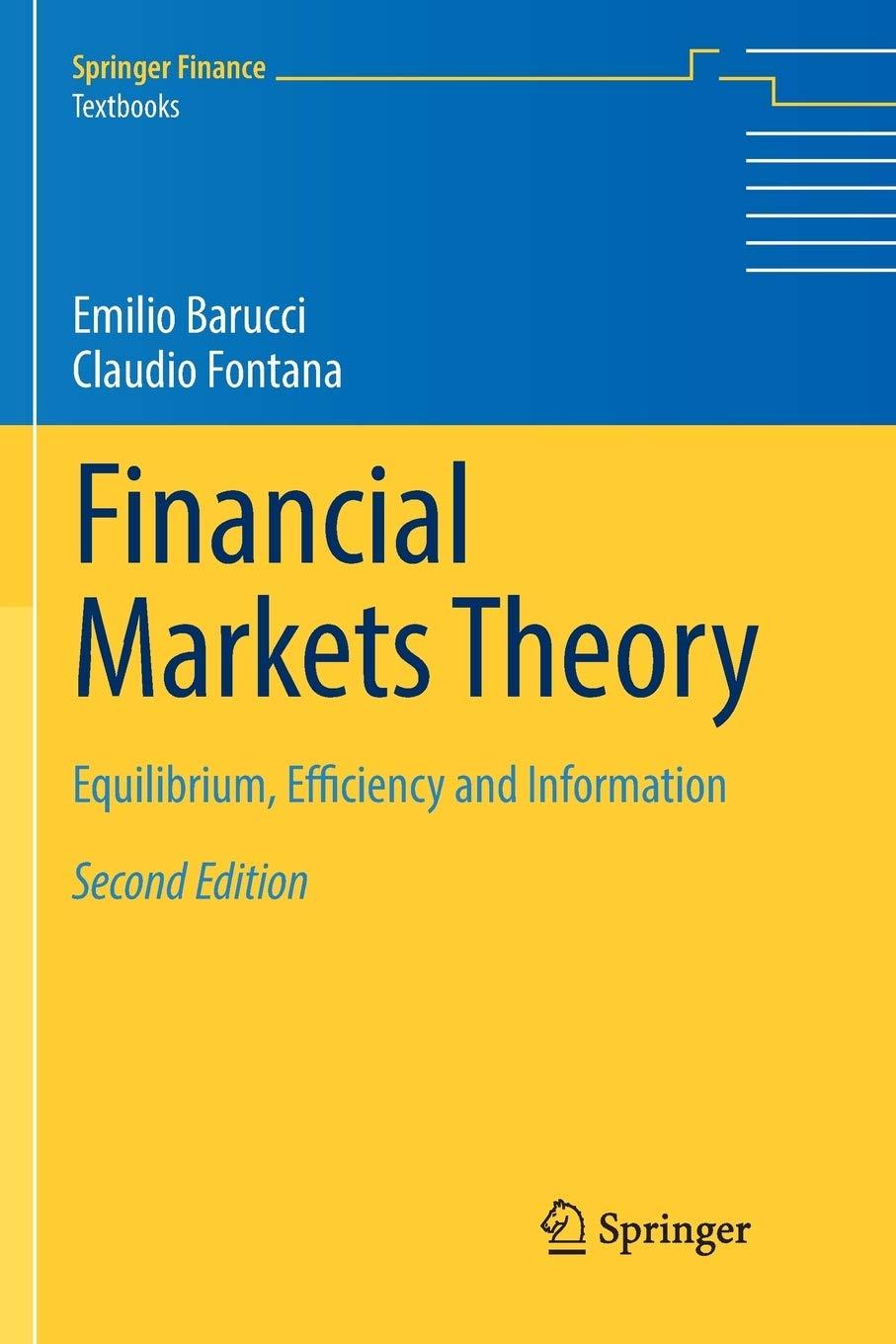Consider the model developed in Subrahmanyam [1575] and presented in Sect. 10.2. In this exercise, we are
Question:
Consider the model developed in Subrahmanyam [1575] and presented in Sect. 10.2. In this exercise, we are going to prove Proposition 10.4.
(i) Start from the conjecture that the risk neutral market maker adopts a linear pricing rule, i.e., letting \(N \tilde{x}+\tilde{z}\) denoting the total market demand, the market maker sets a price \(\tilde{p}=P(N \tilde{x}+\tilde{z})\) given by
\[P(N \tilde{x}+\tilde{z})=\bar{d}+\lambda(N \tilde{x}+\tilde{z}),\]
for some constant \(\lambda\) to be determined. Consider the expected utility maximization problem of an informed trader, conditionally on the observation of the private signal \(\tilde{y}=\tilde{\varepsilon}+\tilde{\eta}\). Assume that each informed trader conjectures that the other informed traders have an asset demand of the form \(\tilde{x}=\beta(\tilde{\varepsilon}+\tilde{\eta})\), for some constant \(\beta\) to be determined. Denoting by \(\tilde{x}\) the optimal demand of an arbitrary informed trader, show that
\[\begin{equation*}\tilde{x}^{*}=\frac{\tilde{\varepsilon}+\tilde{\eta}}{\left(1+\sigma_{\eta}^{2}\right)\left(2 \lambda+a \lambda^{2} \sigma_{z}^{2}\right)+a \sigma_{\eta}^{2}}-\frac{(N-1) \beta \lambda\left(1+\sigma_{\eta}^{2}\right)(\tilde{\varepsilon}+\tilde{\eta})}{\left(1+\sigma_{\eta}^{2}\right)\left(2 \lambda+a \lambda^{2} \sigma_{z}^{2}\right)+a \sigma_{\eta}^{2}} . \tag{10.31}\end{equation*}\]
(ii) By relying on (10.31), show that, for a given value of the constant \(\lambda\), the parameter \(\beta\) corresponding to a linear equilibrium of the economy is given by
\[\beta=\frac{1}{\left(1+\sigma_{\eta}^{2}\right) \lambda(N+1)+a\left(\sigma_{\eta}^{2}+\lambda^{2} \sigma_{z}^{2}\left(1+\sigma_{\eta}^{2}\right)\right)} .\]
(iii) By relying on the equation satisfied in equilibrium by the coefficient \(\beta\) defining the demand of the informed traders, prove that the coefficient \(\lambda\) is given by the solution to the quintic equation
\[\lambda\left(N^{2}\left(1+\sigma_{\eta}^{2}\right)+\frac{1}{\beta^{2}} \sigma_{z}^{2}\right)=\frac{N}{\beta}\]
thus completing the proof of Proposition 10.4.
Step by Step Answer:

Financial Markets Theory Equilibrium Efficiency And Information
ISBN: 9781447174042
2nd Edition
Authors: Emilio Barucci, Claudio Fontana





